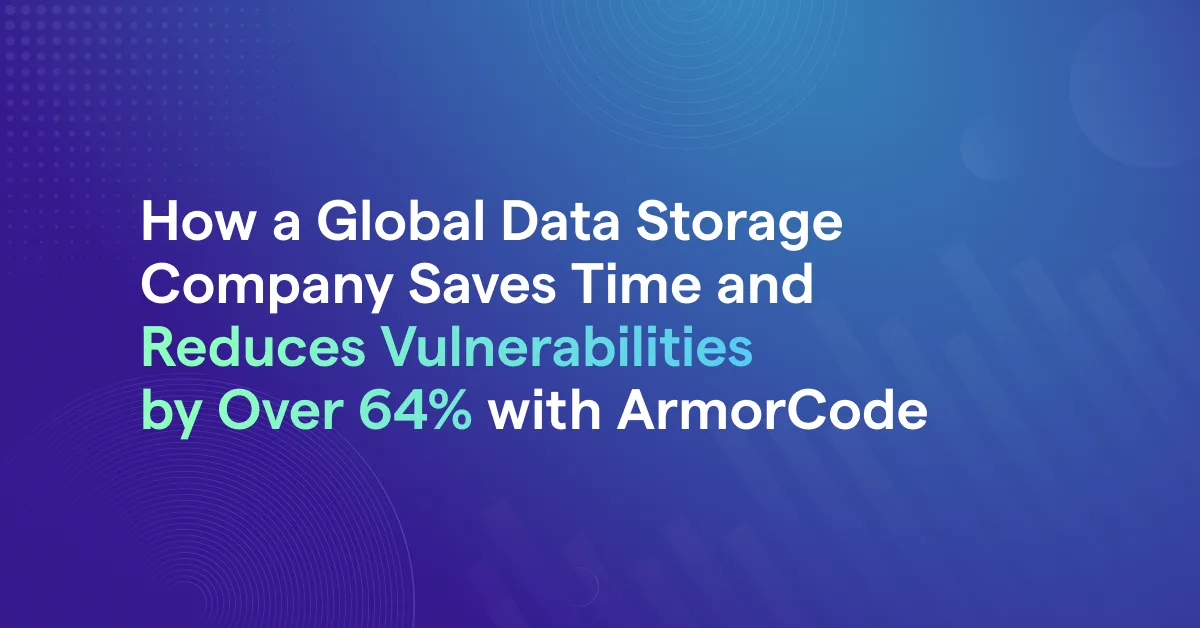Why Unify Your Vulnerability Management?
The number of vulnerabilities and threats are outpacing the ability to address them. Vulnerability management teams must deal with a huge volume of vulnerabilities in an ever-changing landscape. They face:
Fragmented asset visibility across siloed teams, leading to gaps in risk awareness
An overwhelming volume of vulnerabilities found by their scanning tools
Difficulty remediating vulnerabilities due to an inability to determine accurate asset ownership
Slow triaging and remediation due to manual efforts and bottlenecks
Unlocking the benefits of Unified Vulnerability Management
The ArmorCode Platform delivers a scannerless, vendor-agnostic approach to unifying vulnerability management so teams can transform from reactive firefighting to strategic, systematic risk reduction.
Unify
Unify and normalize vulnerabilities from hundreds of application, infrastructure, and cloud security scanners
Prioritize
Prioritize vulnerabilities through risk-based correlation with business context and threat intelligence to focus on what matters
Remediate
Remediate critical vulnerability management workflows through automation, reducing response times and eliminating manual effort across teams
Unify Vulnerabilities Across Your Entire Ecosystem
Address risk by unifying, prioritizing, and remediating vulnerabilities across infrastructure, cloud, containers, and applications. Triage findings based on actual risk to your business, and automate remediation workflows to address vulnerabilities faster than ever before. With ArmorCode, organizations focused on UVM realize:
Insight
Get at-a-glance understanding of vulnerabilities and their impact across the environment
Agility
Tailor and automate workflows to burn down your vulnerability backlog at enterprise scale
Collaboration
Easily identify asset owners to eliminate cross-team friction and scale vulnerability management across the organization
Customer Testimonials
Experiencing ArmorCode for UVM
“Wonderful Product. Highly Satisfied! 5+ Stars
ArmorCode is a world class platform that is quickly emerging as a leader in the vulnerability management space. It works to manage both application security and infrastructure security vulnerabilities and is a crucial tool for any Security team needing vulnerability consolidation and looking to implement vulnerability management automation.”
“Amazing Platform For Managing Appsec And Infrastructure Vulnerabilities
ArmorCode is a fantastic platform that brings vulnerabilities across dispersed areas into a single place to triage, assign and report. It has simplified workflows for both my application security and infrastructure security team.”
“Excellent Product And Company. Highly Recommend!
ArmorCode is a fantastic product that brings together in a single place vulnerabilities across all platforms and disciplines. It is highly customizable and easy to use. ArmorCode has saved my Appsec and Security Engineers countless hours in managing vulnerabilities from multiple sources and belonging to multiple technology teams.”
“ArmorCode Is Certainly The Best AppSecOps Platform Available In The Market
ArmorCode AppSecOps is definitely a great platform that gives complete visibility into application security postures”
“ArmorCode: Comprehensive platform with visibility and integration
Armorcode is an excellent product for vulnerability management….Overall, this product provides end-to-end visibility, integration and collaboration features to make it a good choice for any company to enhance their AppSec capability.”



